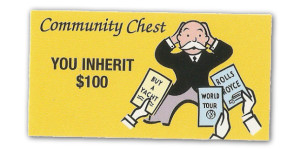 Editor’s Note: A version of this post ran in the finance blog Make Change. Also, embedded in this post is an excerpt from Chapter 4 of my book The Financial Rules For New College Graduates: Invest Before Paying Off Debt And Other Tips Your Professors Didn’t Teach You.
Editor’s Note: A version of this post ran in the finance blog Make Change. Also, embedded in this post is an excerpt from Chapter 4 of my book The Financial Rules For New College Graduates: Invest Before Paying Off Debt And Other Tips Your Professors Didn’t Teach You.
Can I tell you what makes me mad? Finance gurus.
Everybody from Wall Street analysts, to supposed investment-advisory wizards, to pretty talking heads on your TV, sounding smart but spouting nonsense. The Financial-Infotainment-Industrial-Complex is what I call it, and collectively it’s keeping you poor, and charging you too much in fees.
Can I tell you what makes me happy? Teaching compound interest.
 Learning compound interest math is Kryptonite against finance gurus. Being able to calculate compound interest for oneself exposes the wizards as very ordinary people. As Dorothy, Tin Man, Cowardly Lion, and Scarecrow realized, once you’ve seen there’s no magic trick to growing money, you can get on with it. Learning compound interest math can allow you to be, to paraphrase my favorite Twitter account Wu_Tang_Finance, “A gentleman or lady in the streets, but a freak in the spreadsheets.”
Learning compound interest math is Kryptonite against finance gurus. Being able to calculate compound interest for oneself exposes the wizards as very ordinary people. As Dorothy, Tin Man, Cowardly Lion, and Scarecrow realized, once you’ve seen there’s no magic trick to growing money, you can get on with it. Learning compound interest math can allow you to be, to paraphrase my favorite Twitter account Wu_Tang_Finance, “A gentleman or lady in the streets, but a freak in the spreadsheets.”
BE A GENTLEMEN IN THE STREETS AND A MOUSE-LESS FREAK IN THE SPREADSHEETS.
— Wu-Tang Financial (@Wu_Tang_Finance) August 5, 2016
How mad does the Financial Infotainment Industrial Complex make me? Mad enough to spend a few years writing a book to help break through the BS, “The Financial Rules For New College Graduates.” College graduates do not need gurus, they need a few simple rules, and a bit of math so that you can gain intuition into why those rules will work. I mean, you shouldn’t do a lot of math to manage your personal finances, but I see it as a key way of pulling back the curtain on those finance gurus.
So what does learning compound interest math do for you? It tells you:
- How much a $5,000 IRA invested at age 25 grows to by age 75, if you achieve a 6% return. (Answer: $92,101)
- How much your rent will cost fifteen years from now, if your rent starts at $1,000 and increases by 10% each year. (Answer: $4,177.25)
- How much federal government debt will grow to 15 years from now, if it starts at $15 trillion and compound grows by 8% each year. (Answer: $47.5 trillion)
- How much money your credit card lender can make off of your $7,000 balance, if your bank charges you 22%, you pay only monthly interest, and they continuously reinvest your interest payments every month for 10 years (Answer: $61,929)
You can calculate all this stuff yourself, free yourself of gurus, and build a better relationship to your own money. My frustration with all the other personal finance books I’ve ever read is that they don’t teach this math. They just show a “compound interest” table, or some other impractical nonsense that doesn’t teach people how to do it for themselves. So…are you ready to become a freak in the spreadsheets?
[The following is an excerpt from Chapter 4 of my book]
For best results, I recommend opening a spreadsheet—like right now—for calculating the following algebraic formula.
For a simple demonstration, let’s assume we have three variables, and one unknown variable.
The unknown variable we want to solve for is “how big will our money become at some point in the future?”
Let’s call this variable Future Value, or FV for short.
The three known variables are
- How much do we have now? Let’s call this Present Value, or PV for short.
- At what annual % return does our money grow? Let’s call this Annual Yield, or Y for short.
- How many years does our money grow? Let’s call this Number of Compounding Periods, or N for short.
I’ll skip all the math proofs, but if we know the last three variables, we can calculate the original unknown variable Future Value, FV, through the following formula.
FV = PV * (1+Y)^N
Look at that! That’s it! If you’re comfortable already with algebra, you may be able to begin to work from my explanation above to apply that formula.
But especially if you’re not comfortable, let’s do some examples below that use the variables. Also, I think watching the embedded video above can help you see how you would use a spreadsheet to solve this math.
Kittens
Let’s say I have 4 feral kittens terrorizing my back yard. And let’s say that on an annual basis, the population of kittens in my backyard grows by 50%. After 10 years, how many kittens will I have?
With that information we can use the compound interest formula to give us a precise answer.
The number of kittens we have today, 4, is the present value (PV).
The growth rate of kittens, 50%, is the Rate of Return, or Yield (Y).
The number of compounding periods in years,10, is our (N).
We plug those three variables into the formula
FV = PV * (1 + Y)^N
to find out the future number of kittens (FV).
Future number of kittens = 4 * (1+0.5)^10
In my spreadsheet I calculate the answer of the future number of kittens (FV) = 230 kittens (plus some fractional amount of kittens, which I interpret as kittens still in utero). Talk about a loud feline ROAWR!
I am so glad I got those backyard kittens fixed.
Inflation over time
Just as our money grows over time, inflation works in a compounding way to erode the value of our currency. We can use the compound interest formula to understand the change in prices due to inflation.
Let’s say we need to know the future price of monthly rent in an apartment in our city, which currently rents for $1,000 per month. Every year the landlord raises the rent by 10%. What will the apartment cost us in the future, say, 15 years from now?
The inflation in our monthly rent can be calculated because we know the present rent (PV) of $1,000, we know the annual growth (Y) of 10%, and we know the number of compounding periods (N) from now that we need to calculate is 15. The future rent (FV) is calculated as PV * (1+Y)^N.
So, the future rent is $1,000 * (1+0.10)^15.
My spreadsheet solves this to tell me my rent in 15 years will be $4,177
Good to know.
[END Book Excerpt]
Finally, setting up a compound interest formula in a spreadsheet works extremely well for calculating how small investments made over time – like in our 20s – can inevitably become large investments in our later years. This second video below shows how it’s relatively easy, once you know how to set up a compound interest calculator, to take charge of planning your own wealthy future.
To really master compound interest, go ahead and purchase my book – hardcover or Kindle! – at your favorite bookstore or your favorite online bookseller.
For more on the magical power of compound interest, search through the search window in the upper right hand of this blog for “compound interest,” or try previous articles on Bankers-Anonymous.com
Also, see earlier introduction to compound interest and discounting cashflows, Part I
and Discounting Like a Wizard, Part 3 (forthcoming)
Post read (352) times.


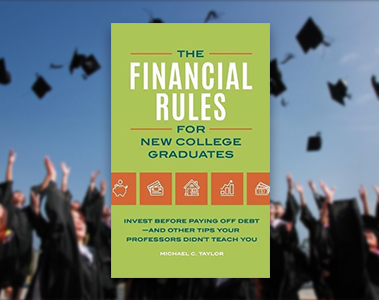

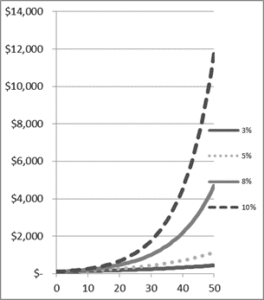


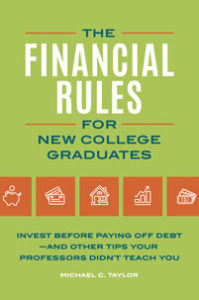
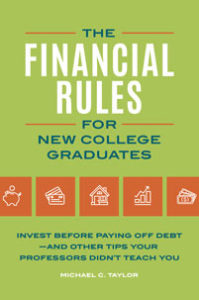
 A version of this post ran in the
A version of this post ran in the 